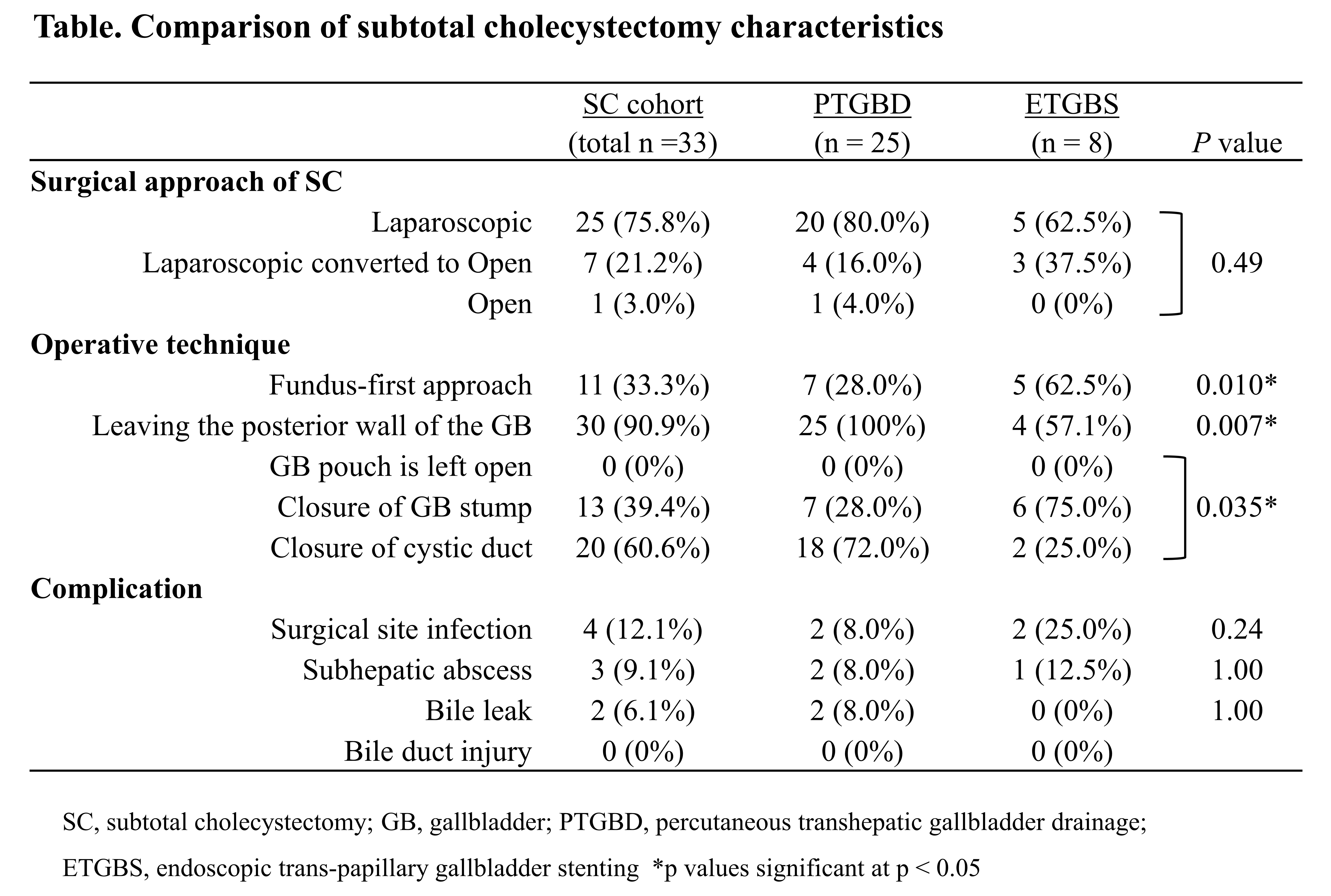BACKGROUND:
The use of gallbladder drainage procedures is often considered for acute cholecystitis (AC) patients with significant peri-operative risks. While percutaneous transhepatic gallbladder drainage (PTGBD) has been evaluated in previous studies, there are scarce data on the feasibility and efficacy of endoscopic trans-papillary gallbladder stenting (ETGBS) in patients with AC. The aim of this study is to compare the characteristics of interval cholecystectomy following ETGBS and PTGBD.
METHODS:
This retrospective cohort study included patients who underwent ETGBS and PTGBD for AC and underwent interval cholecystectomy between January 2018 and March 2023. Demographics, operative technique, and postoperative complications of patients with ETGBD and PTGBD were compared.
RESULTS:
A total of 59 patients were included (4 ETGBS and 45 PTGBD). The median age was 78 years (interquartile range [IQR]: 67-86) and 66.1% were male. The median days between ETGBS and cholecystectomy was significantly longer than the PTGBD group (64 [45-150] days vs. 16 [10-42] days, p=0.045). There were no significant differences in the rate of laparoscopic (vs. open) surgery (71.4% vs. 82.2%, p=0.14), as well as the rate of subtotal cholecystectomy (55.6% vs. 57.1%, p=1.00). Among 33 patients who underwent subtotal cholecystectomy, the ERGBS group underwent closure of the gallbladder stump more frequently due to the inability to ligate the cystic duct compared to the PTGBD group (75.0% vs. 28.0%, p=0.035). Similarly, a fundus-first approach was more commonly selected in the ERGBS group (62.5% vs. 28.0%, p=0.01). No significant differences in the incidence of postoperative complications were observed between the two groups (Table).
CONCLUSIONS:
ETGBS may serve as a feasible urgent gallbladder drainage method and a bridge to definitive surgery in high-risk patients with AC. Laparoscopic subtotal cholecystectomy following ETGBS may be a potential treatment option, and further studies are warranted to evaluate procedure-related outcomes and costs.
